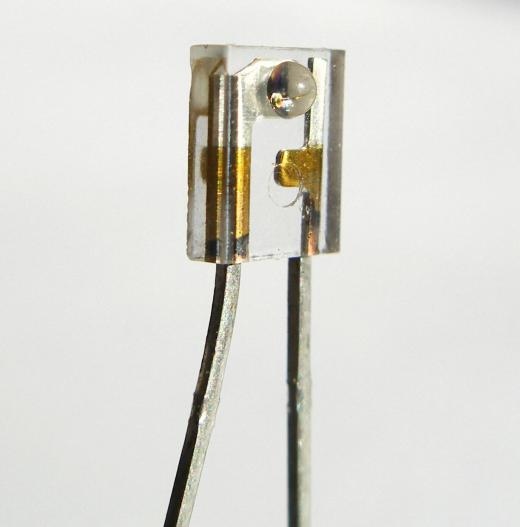An opto-isolator is an electronic device that uses light to send signals between parts of a circuit. This allows the elements of the circuit to communicate without an electrical connection. The advantage of this isolation is that it prevents voltage spikes from affecting multiple circuits. It also helps to decrease noise and interference in audio and video equipment by preventing electrical current from flowing where it is not wanted. Most opto-isolators are very inexpensive, costing less than $1 US Dollar.
The operation of an opto-isolator is a fairly basic process. When an electronic signal reaches the opto-isolator, that signal is converted into light. The light is then transmitted to a receiver. After the signal has been received, it is converted back into an electronic signal.

There are two basic kinds of opto-isolators that have their own uses. A digital opto-isolator changes the state of its output to match that of the input. It should be used when bit or pulse output is needed. An analog isolator reproduces the input using an analog signal. This type of opto-isolator should be used when the amount of the signal is the crucial factor.
The average opto-isolator is made up of three basic parts. A solid casing protects against outside light leaking into the isolator. A light-emitting diode (LED) or other small light source sends the signal, and a photosensitive part receives the signal. The most common light receivers are photodiodes and phototransistors. From the outside, an opto-isolator looks like a transistor that has extra leads attached.
In many cases, the term "opto-coupler" is used interchangeably with "opto-isolator," but there is a difference between the two devices. Both transmit information between elements of a circuit while allowing the elements to remain isolated. The difference comes from the potential voltage of the circuits. An opto-isolator is designed for use with systems in which the potential voltage is between 5,000 and 50,000 volts, and opto-couplers are designed only for use in systems where the potential voltage is less than 5,000 volts. Using the wrong device can cause system failure.
Humidity also can cause major problems for opto-isolators. If there is too much humidity in the air, the electricity might arc, destroying electronic isolation. Similar problems can be caused by barometric pressure, and air pollution can cause similar issues. The best way to prevent this problem is to keep electronics that use opto-isolators in a climate-controlled area.
